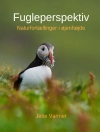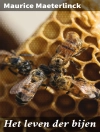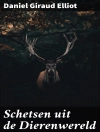The structure and function of grasslands worldwide have been disrupted by habitat fragmentation, the removal of native grazers and altered ?re frequency (Samson and Knopf 1994). Such changes threaten the integrity of native grassland communities of plants and animals in many ways and at many levels (Janzen 1983; Collins 2000; Cully and Michaels 2000). Habitat fragmentation alters size, spacing and context of habitat patches, which can result in an increase in the local rate of extinction of plant and animal species by reducing fecundity, population size and colonization of species from similar habitats (Noss and Csuti 1992). Compounding the effects of fragm- tation, extirpation of ?re and loss of populations of native grazers can lead to encroachment of woody vegetation and loss of grassland (Leach and Givnish 1996; Collins et al. 1998). In addition to effects on plant communities, the use of prescribed ?re to enhance grasslands is of increasing relevance as regional losses, isolation and fragmentation of grasslands have led to corresponding declines in local population densities of many species of grassland-dependent birds (Askins 1993; Vickery et al. 1994). Ar- sensitive species in grasslands are especially vulnerable to these effects (Herkert 1994a, b) which can create speci?c physical, environmental and ecological changes (Yahner 1988) that lower habitat quality for area-sensitive species that have been historical specialists of grassland habitats.
Table of Content
Responses of plant and bird communities to prescribed burning in tallgrass prairies.- Population trends and spatial synchrony in peripheral populations of the endangered Lesser grey shrike in response to environmental change.- Monitoring mammals in the Caxiuanã National Forest, Brazil – First results from the Tropical Ecology, Assessment and Monitoring (TEAM) program.- Grassland versus non-grassland bird abundance and diversity in managed grasslands: local, landscape and regional scale effects.- Biogeographic patterns of the East African coastal forest vertebrate fauna.- Sooty Shearwater (Puffinus griseus) on Guafo Island: the largest seabird colony in the world?.- Mexico in the international reptile skin trade: a case study.- Use of forest fragments by blue-winged macaws (Primolius maracana) within a fragmented landscape.- Commercialization and use of snakes in North and Northeastern Brazil: implications for conservation and management.- Philopatry, dispersal patterns and nest-site reuse in Lesser Grey Shrikes (Lanius minor).- Conservation biogeography of anurans in Brazilian Cerrado.- Avian responses to tourism in the biogeographically isolated high Córdoba Mountains, Argentina.- Population decline of loggerhead turtles: two potential scenarios for Fethiye beach, Turkey.- Habitat use, roost selection and conservation of bats in Tsingy de Bemaraha National Park, Madagascar.- Territoriality and Survivorship of the Sierra Madre Sparrow in La Cima, México.- Analysis of the species description process for a little known invertebrate group: the limnoterrestrial tardigrades (Bilateria, Tardigrada).- Environmental correlates for species richness among amphibians and reptiles in a climate transition area.- Amphibian diversity in East African biodiversity hotspots:altitudinal and latitudinal patterns.- China Subregional Avian Endemism and Biodiversity Conservation.- How resilient are Andean montane forest bird communities to habitat degradation?.- Human and natural impacts on forests along lower Tana river, Kenya: implications towards conservation and management of endemic primate species and their habitat.- Fragmentation causes rarity in common marmosets in the Atlantic forest of northeastern Brazil.- Distribution, abundance, and habitat use of introduced Boa constrictor threatening the native biota of Cozumel Island, Mexico.- Camera-trap studies of maned wolf density in the Cerrado and the Pantanal of Brazil.- Mammal survey at a ranch of the Brazilian Cerrado.- Surveying carnivores at large spatial scales: a comparison of four broad-applied methods.- Habitat and landscape factors associated with neotropical waterbird occurrence and richness in wetland fragments.- Livestock husbandry as a tool for carnivore conservation in Africa’s community rangelands: a case–control study.- Comparison of funding and demand for the conservation of the charismatic koala with those for the critically endangered wombat Lasiorhinus krefftii.- Nest site selection in middle and great spotted woodpeckers Dendrocopos medius & D. major: implications for forest management and conservation.- An Evaluation of the Contribution of Cultivated Allspice (Pimenta Dioca) to Vertebrate Biodiversity Conservation in Nicaragua.












